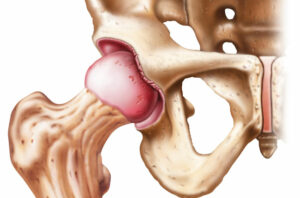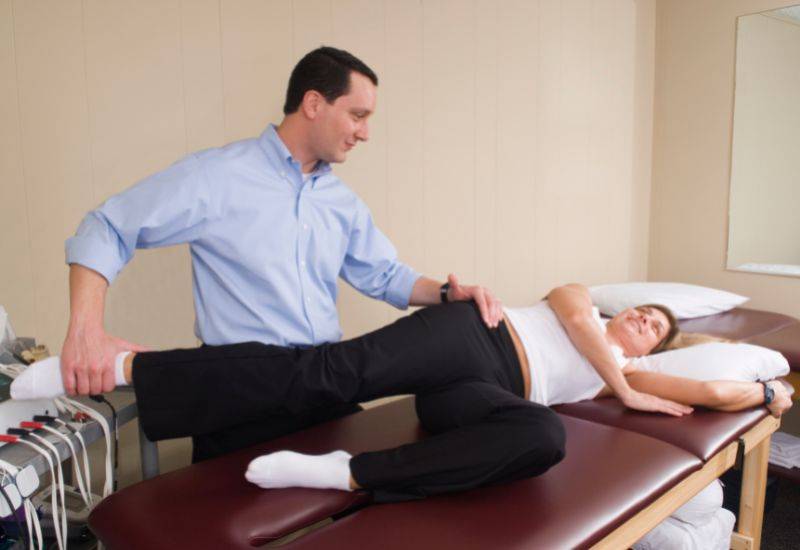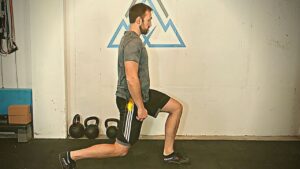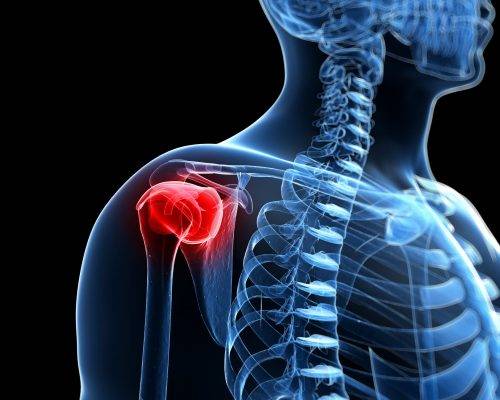Labrum tears are a common injury in athletes and can be caused by a wide variety of activities. This blog post covers everything you need to know about labrum tears and provides a comprehensive guide to solving the problem. From the basics of labrum tears to tips for treatment and rehabilitation, you will have all the information you need to get started.
Contents
- 1 What Are Labrum Tears?
- 2 What Causes Labrum Tear?
- 3 How Does Surgery Repair Labrum Tears?
- 4 Physical Therapy For Labrum Tears
- 5 Types of Physical Therapy For Labrum Tears
- 6 Rewards of Physical Therapy For Labrum Tears
- 7 Risks of Physical Therapy For Labrum Tears
- 8 After Physical Therapy: What to Expect
- 9 Conclusion
What Are Labrum Tears?

Labrum tears are a common injury in athletes and can be caused by several factors, such as overuse, forceful contraction or movement, and excessive force. The labrum is a triangular-shaped piece of cartilage that sits between the shoulder blade and the acetabulum (the cup-shaped socket within which the shoulder joint moves). It helps to keep the shoulder joint stable and healthy. When it tears, it can cause pain and difficulty moving the arm.
There are several ways to diagnose labrum tears: through X-rays, ultrasound scans, or MRI scans; through physical examination; or an assessment using computerized tomography (CT) or magnetic resonance imaging (MRI). Treatment usually involves surgery to repair the tear. After surgery, patients typically need rehabilitation to help them regain their mobility and strength.
What Causes Labrum Tear?

Labrum tear is a sports injury that can occur in any type of athlete. It’s most commonly seen in football, soccer, and basketball players. The cause of the labrum tear is often friction between the labrum and the shoulder blade. This friction can cause the labrum to pull away from the shoulder blade. In some cases, additional factors may be involved, such as rotator cuff tears or arthritis.
There are some other causes of labrum tears that may require additional evaluation. These include:
Forceful abduction of the shoulder
One of the most common causes of labrum tears is forceful abduction of the shoulder. This happens when the arm is abducted ( pulled away from the body ) too quickly or with too much force. Abduction injury to other structures in the shoulder can also occur as a result of this movement.
Friction between the labrum and the rotator cuff
In some cases, friction between the labrum and the rotator cuff can lead to a tear. This can happen if the labrum rubs against the rotator cuff tendon or if there is a gap between the two tissues.
injury to the shoulder capsule
In some cases, an injury to the shoulder capsule can lead to a tear in the labrum. This is often seen in people who have suffered a rotator cuff tear.
Overhead throwing
One of the most common causes of labrum tears is throwing a ball overhead. Overhead throwing requires that the arm be abducted ( pulled away from the body ) and thrown quickly into the air. This can cause a lot of stress on the shoulder, which is why it’s often one of the first injuries to occur in athletes who are prone to this type of injury.
Labrum impingement syndrome
Labrum impingement syndrome is a condition that occurs when the labrum rubs against the glenoid (a cartilage surface near the shoulder joint). This can lead to pain, inflammation, and even a tear in the labrum. It’s often seen in athletes who regularly throw the ball overhead.
Repetitive overhead motions
Repetitive overhead motions can also lead to a tear in the labrum. This happens when the shoulder is asked to do too much in a short period. Overhead throwing, for example, can cause this type of injury.
How Does Surgery Repair Labrum Tears?
Treating labrum tears typically requires the repair of the labrum and surrounding tissues. This may include:
- Suturing the torn tissues together
- Inserting a piece of tissue from the hip joint to hold the repaired tissues in place
If the tear is severe, the surgeon may also need to remove part of the labrum. The surgery of labrum tears is typically done as an outpatient procedure. Many types of surgeries can repair labrum tears, so it is important to discuss the specifics of your case with your surgeon. Also, be aware that there are potential risks associated with any surgery, so it is important to discuss these with your surgeon as well.
Physical Therapy For Labrum Tears

Physical therapy can provide relief for labrum tear patients. Also, Physical therapy can help to improve the range of motion, strengthen the muscles and tendons around the shoulder joint, and reduce pain. Physical therapy also may help to restore function to the shoulder.
The physical therapist will work with the patient to determine which exercises are best suited for their situation. The exercises may include stretching, strengthening, and balance activities. The physical therapist may also prescribe medication or other treatments as needed.
The physical therapist will monitor the patient’s progress regularly and adjust the exercises as needed. Patients should continue physical therapy until they no longer experience any pain or discomfort in their shoulders.
Types of Physical Therapy For Labrum Tears
There are a few different types of physical therapy that can be used to treat labrum tears. Some therapies focus on restoring the range of motion, others focus on reducing pain and inflammation. It’s important to choose the right type of therapy for your situation.
Some common treatments for labrum tears include:
-Range of Motion Therapy: This is often the first step in treating labrum tears. Therapists will help you regain the range of motion in the shoulder joint. This can help reduce pressure on the labrum and improve your overall function.
-Soft Tissue Therapy: This type of therapy helps reduce inflammation and pain while improving the range of motion and movement. Treatment may also include exercises designed to stretch or strengthen specific muscle groups around the shoulder joint.
-Electrotherapy: This type of therapy uses electrical currents to improve healing and reduce pain. It is effective in treating various types of injuries, including labrum tears.
It’s important to consult with a physical therapist if you experience pain or discomfort in your shoulder, especially if the pain is severe or doesn’t improve after following a traditional treatment plan. There are many different options available for treating labrum tears, so it’s important to find one that works best for you.
Rewards of Physical Therapy For Labrum Tears

There are a few risks and rewards associated with physical therapy for labrum tears.
Some of the benefits of physical therapy are:
Improve the range of motion and flexibility in the shoulder joint.
One of the most common benefits of PT for labrum tears is improvement in range of motion. Improving shoulder flexibility will help to reduce the chance of future shoulder injuries and help the shoulder joint function more smoothly.
Reduce pain and inflammation associated with a labrum tear.
When there is pain and inflammation in the shoulder, physical therapy can help to reduce both of those symptoms. Physical therapy can also help to improve the range of motion and flexibility of the shoulder, both of which can reduce pain and inflammation.
Improve strength and function in the shoulder joint.
Also, PT can help to improve strength and function in the shoulder joint. This can help to reduce the chance of future injuries and improve the overall function of the shoulder joint. The strength of the shoulder joint is important because it allows the shoulder to move in a range of motion that is necessary for everyday activities.
Risks of Physical Therapy For Labrum Tears
However, there are also some risks associated with physical therapy for labrum tears:
Physical therapy may cause mild to moderate pain during the treatment period.
This is one of the risks for PT for labrum tears. Physical therapy may cause some mild to moderate pain during the treatment period. This pain may last for a few days, but it should decrease after the therapy session is completed.
Physical therapy may cause a limited range of motion in the shoulder joint.
There maybe be a limited range of motion in the shoulder joint after PT for labrum tears. This is usually temporary, but it may need to be monitored during therapy. If there is a limited range of motion, physical therapy may need to be adjusted or modified to ensure maximal benefit for the patient.
Physical therapy may cause temporary stiffness or soreness in the shoulder joint after treatment is completed.
Stiffness and soreness in the shoulder joint may be temporary after PT for labrum tears. This is usually mild and should gradually decrease over time. However, if these symptoms are severe, they may need to be addressed by a doctor.
After Physical Therapy: What to Expect

Physical therapy is a great way to relieve pain and improve function in the shoulder. Treatment may include exercises, stretches, and injections. Recovery following physical therapy can take several weeks or months, but most people report significant improvement.
There are several things that you should expect during your recovery period. The first few weeks will be the hardest as you will likely experience some discomfort and soreness. This will gradually dissipate over time as your muscles get stronger and your range of motion improves.
In addition to improvements in shoulder function, physical therapy can also help reduce inflammation and promote healing. If you have surgery related to a labrum tear, make sure to follow your physician’s post-operative instructions carefully.
There are also some activities to do after physical therapy to help speed up the healing process. These include icing, elevating your shoulder, and taking pain relievers as directed by your doctor. Be patient – it can take up to six months for a full recovery.
Another step is to consider seeking professional help if you continue to experience significant pain despite physical therapy. A therapist may be able to recommend additional treatments or exercises that are specific to your injury.
Conclusion
Labrum tears are one of the most common injuries in athletes, and can often be caused by several factors such as overuse or negligence. In this comprehensive guide, we will go over the different types of labrum tears and provide you with advice on how to treat them. We hope that by reading this article, you will be able to identify the signs and symptoms of a labrum tear early on so that you can get treatment before it becomes too late. Thank you for taking the time to read this article!
Physical Therapy help patients recover from pain. If you’re experiencing Back pain, Shoulder pain, Knee pain, Neck pain, Elbow pain, Hip pain, or Arthritis pain, a physical therapist at MantraCare can help: Book a physiotherapy session.


